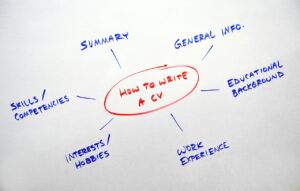WineTalent Job Hunting Primer
The current employment landscape has a lot of people unexpectedly looking for a job. Forecasters in the wine industry have been very gloomy about wine sales and consumption. This has had some companies laying off employees, and many companies being wary about bringing on new employees. While this is a trying time, the best thing to do is get your job search started. Let’s get your LinkedIn profile working for you.
Part 3 – Your LinkedIn Profile
Job hunting today requires that you have a LinkedIn profile, and if 70% of working adults are on LinkedIn, it’s a great way to connect to others in your field. I live and breathe LinkedIn and use it just as much as the database of resumes that I’ve amassed over 20 years.
Here’s what I like to see on your profile:
Photo: Put up a recent photo that looks professional and engaging. You don’t need to get a professional headshot but use a picture that is in focus and shows you in your best light.
Background Image: Choose something that is related to your career aspirations. If you are in wine sales, maybe something with a wine cellar or wine sales event. In viticulture? Show some amazing vines you are responsible for, or intellectually curious about. Use an image that is fairly neutral but speaks to who you are.
Location: Put down your geographical preferences. If you live in Napa and only want to look at local jobs, that is perfect. But if you are in Napa and open to other locations, mention that you are open for relocation. Location is one of the first things I filter for in searches, so this data is very important for what searches you come up in.
Headline: This is like your title, or your specialty. You can tailor this to your job hunt. A winemaker could put something along the lines of “Experienced Large Production Winemaker/General Manager” or “Luxury Estate Winemaker” to call out what you do and what types of jobs you want.
Current Position: If you are currently employed, put your job title. If your job title is confusing, I encourage you to simplify it. Sometimes the job title your company uses isn’t succinct. If you are doing General Manager type work, put your current title down and follow it with General Manager. You can always explain that in your work summary.
Open To: This section shows what types of jobs you are interested in. It can show that you are open to situations such as work opportunities, board positions and more. If you are currently unemployed and looking for a job, say you are open to work. You have nothing to lose by saying this, and possibly by stating it you will have a job to gain.
About/Summary: This is a great spot to give an overview of you. This can include what types of work you are looking for, what experience you have and your education. It doesn’t need to be too lengthy, but someone with at least 10 years of work experience under their belt should have at least 5-10 sentences that showcase their talents. Note: Summarizing you can be a tough assignment. Here’s a good article to help you.
Industry: Back in the good ol’ days we could use Wine & Spirits as our industry. That changed last year, and now I recommend using Beverage Manufacturing. Yes, LinkedIn, this is a LAME industry descriptor. But until my campaign to reintroduce Wine & Spirits succeeds, we gotta work with what LI gives us.
Experience: This is where you put your work experience. If you have worked for one company, but in different brands/locations, I recommend putting your top line as the umbrella company and list the entire time you worked there, then break it out to the different roles. This is very helpful for recruiters. Remember to use specifics whenever possible. If you increased sales 300%, put it on there. If you were responsible for a crew of 25, get it listed. If you helped save $1MM for the company through increased efficiency—write it down.
Activity: People with a comprehensive LI profile have a 71% higher chance of getting a job interview. If you are looking to engage with recruiters and industry professionals, putting up posts about relevant information allows you to get top billing in their feeds. You can post industry articles, recent accomplishments, fun facts and other info in your activity feed. I encourage you to keep it professional, not too silly or personal.
Education, Accomplishments, Licenses, Certificates, Interests, Skills: This is all important information to list. Put down your credentials, specific accomplishments, licenses, certificates, and skills.
Connections: Having a strong network on LinkedIn may be the most important aspect of creating a strong profile. I encourage you to link to as many relevant people as possible on the site. But beware, there are a lot of phony accounts and people who want to sell you something, so be thoughtful of whom you connect with. This Executive Career Brand post hit the nail on the head for me of who I say yes to, and who I decline invitations from. A typical user can search for people who are 1st, 2nd or 3rd connections. Therefore, if you have more connections, it is more likely you will be found in a search.
Typos and grammatical errors: Researching this article, I was looking at my connections’ profiles and pulling up related articles. My top pet peeves when reviewing content are typos and grammatical errors. I was even looking at a “subject matter expert” on LI profiles, and she had misspelled the title of her article. That made me think she wasn’t the expert she professed to be. Let this be a lesson for you—review your profile and make sure you don’t have errors in it. It may just land you that interview and job offer.
Good luck with your LinkedIn profile. And if you are reading this, connect with me there!







